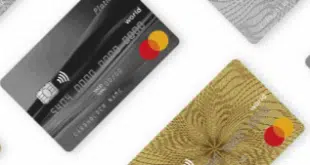Counterfeit fraud on Canada’s Interac debit cards fell 45% to a record low in 2014, and 80% of the fraud happened outside of Canada, according to new figures from Toronto-based Interac Association. The five-year slide in skimming-related fraud coincides with the rise of EMV smart cards in Canada as well as aggressive measures to minimize magnetic-stripe transactions and educate consumers and merchants about the new chip-and-PIN cards.
Interac says counterfeit fraud totaled $16.2 million (Canadian) last year compared with $29.5 million in 2013. Only $3.2 million, or 20%, of 2014’s fraud actually occurred in Canada. Most of the fraud occurred in the United States or other countries where mag-stripe payments still dominate, Mark Sullivan, Interac’s head of fraud-risk programs, tells Digital Transactions News. Interac is Canada’s national PIN-debit network.
Counterfeiting, which accounts for the majority of Interac’s fraud, amounted to only a tiny fraction of the network’s $211 billion in charge volume last year on 4.9 billion transactions. The network has 503,000 merchants and about 65,000 ABMs, for automated banking machines, as ATMs are known in Canada, according to a spokesperson.
Interac’s counterfeit fraud peaked at $142.3 million in 2009, about the time Canada began its conversion to EMV chip-and-PIN cards, and more than 90% of that fraud occurred in Canada. Now fraud is down by 88%.
“EMV has had a very strong part to play,” Sullivan says about the fraud reduction. But he adds that Interac and Canadian financial institutions also have instituted aggressive education efforts in recent years about chip cards and steps consumers and merchants can take to thwart payment card fraud.
In addition, Interac is instituting policies that will ban mag-stripe transactions at ABMs and in stores and restaurants. For Canadian consumers, ABMs began accepting only chip-based Interac transactions as of Jan. 1, 2013. Mag-stripe Interac transactions at the point of sale using debit cards issued by Canadian banks will be banned after Dec. 31, 2015.
“Right now, suffice to say if you’re a Canadian bank-account holder with a Canadian card—the only way to make a transaction is chip,” says Sullivan. Those policies also apply to Canadians using their Interac cards in foreign countries where EMV is well established, such as Western European nations, according to Sullivan.
Debit card counterfeiting often originates when a criminal places a so-called skimmer on a POS terminal or ATM. The device captures account data encoded in the card’s mag stripe, enabling the fraudster to make counterfeit cards. The fraudster likely will need the card’s PIN, which he can capture through various techniques, including placement of a tiny camera at an ATM.
Chip cards, which are difficult to counterfeit, usually have a backup mag stripe, and Canadians often use that mag-stripe when they travel to the U.S. or other places where EMV isn’t the standard. That’s why only a fifth of Interac’s remaining skimming-related fraud originates in Canada.
The Retail Industry Leaders Association (RILA) trade group, a U.S. retailer trade group that strongly backs chip-and-PIN authentication as the U.S. EMV conversion gets into high gear this year, today issued a statement noting how chip-and-PIN helped slash Canadian card fraud. Many American retailers want all U.S. EMV cards to use PINs, but issuers often counter that signature authentication with chip cards will provide sufficient security for credit cards. Most U.S. financial institutions are expected to retain the use of PINs with EMV debit cards since customers already enter a PIN for mag-stripe debit transactions.





